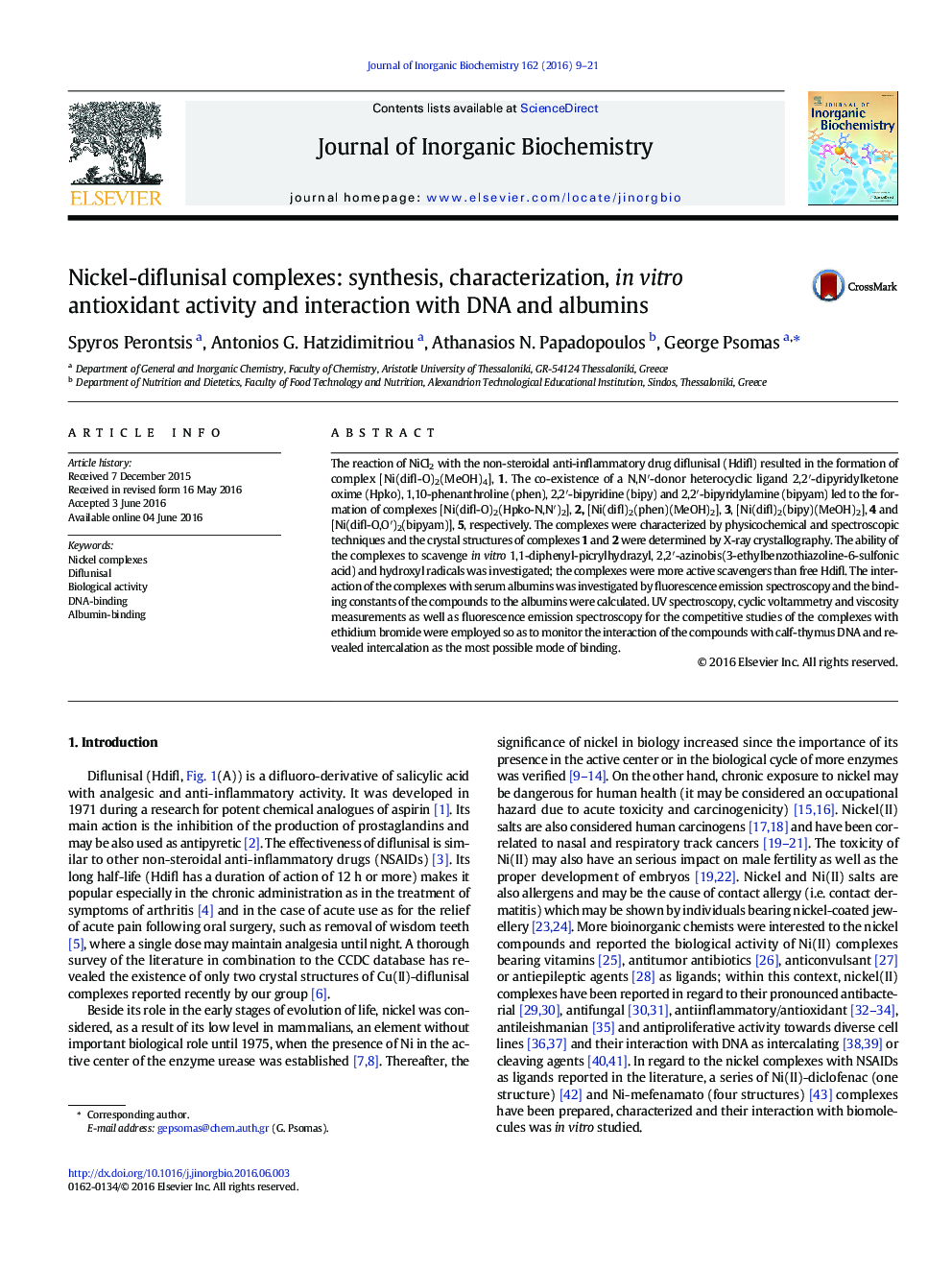| کد مقاله | کد نشریه | سال انتشار | مقاله انگلیسی | نسخه تمام متن |
|---|---|---|---|---|
| 1316354 | 1499425 | 2016 | 13 صفحه PDF | دانلود رایگان |

• Five nickel(II) complexes with the antiinflammatory drug diflunisal were characterized.
• Two crystals structures were determined.
• The complexes show significant radical scavenging activity.
• The Ni-diflunisal complexes can bind to human or bovine serum albumins.
• Intercalation is the most possible binding mode of the complexes to calf-thymus DNA.
The reaction of NiCl2 with the non-steroidal anti-inflammatory drug diflunisal (Hdifl) resulted in the formation of complex [Ni(difl-O)2(MeOH)4], 1. The co-existence of a N,N′-donor heterocyclic ligand 2,2′-dipyridylketone oxime (Hpko), 1,10-phenanthroline (phen), 2,2′-bipyridine (bipy) and 2,2′-bipyridylamine (bipyam) led to the formation of complexes [Ni(difl-O)2(Hpko-N,N′)2], 2, [Ni(difl)2(phen)(MeOH)2], 3, [Ni(difl)2(bipy)(MeOH)2], 4 and [Ni(difl-O,O′)2(bipyam)], 5, respectively. The complexes were characterized by physicochemical and spectroscopic techniques and the crystal structures of complexes 1 and 2 were determined by X-ray crystallography. The ability of the complexes to scavenge in vitro 1,1-diphenyl-picrylhydrazyl, 2,2′-azinobis(3-ethylbenzothiazoline-6-sulfonic acid) and hydroxyl radicals was investigated; the complexes were more active scavengers than free Hdifl. The interaction of the complexes with serum albumins was investigated by fluorescence emission spectroscopy and the binding constants of the compounds to the albumins were calculated. UV spectroscopy, cyclic voltammetry and viscosity measurements as well as fluorescence emission spectroscopy for the competitive studies of the complexes with ethidium bromide were employed so as to monitor the interaction of the compounds with calf-thymus DNA and revealed intercalation as the most possible mode of binding.
Five nickel(II) complexes with diflunisal and nitrogen- and/or oxygen-donors as co-ligands exhibit noteworthy radical scavenging activity and binding affinity for albumins and calf-thymus DNA.Figure optionsDownload as PowerPoint slide
Journal: Journal of Inorganic Biochemistry - Volume 162, September 2016, Pages 9–21